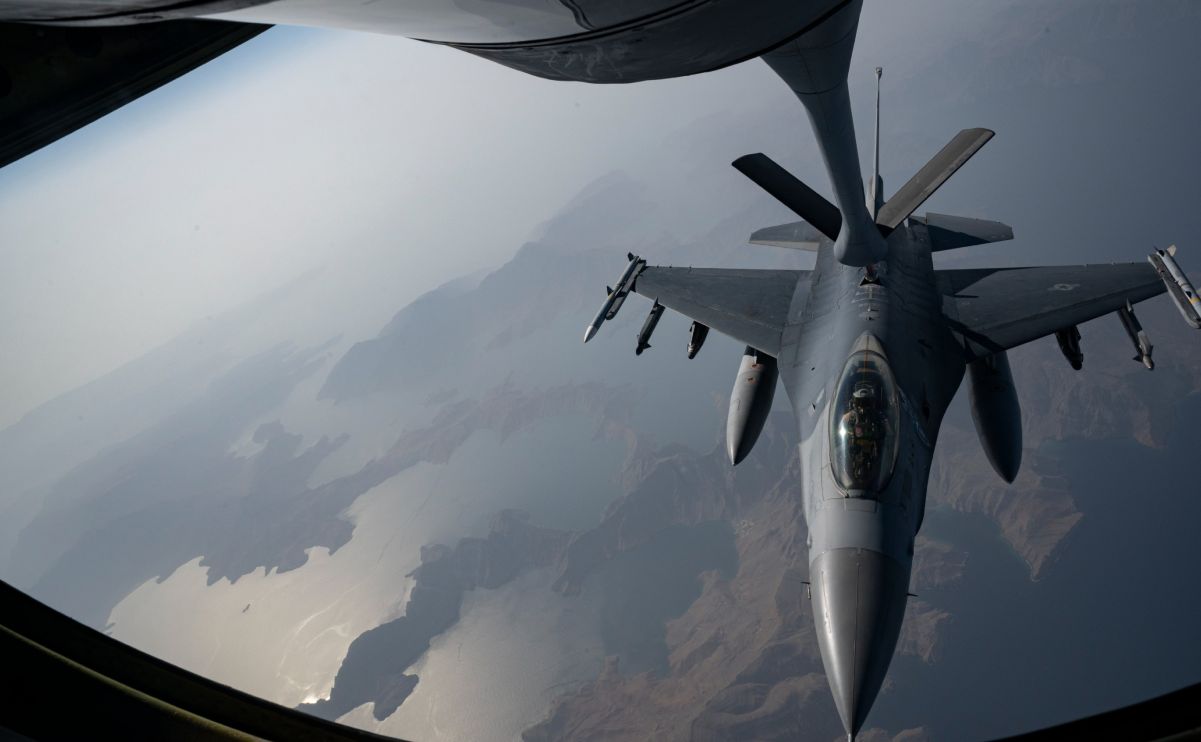US Unleashes ‘Three Green Stars’ F-16 in the Middle East”
In a statement by the U.S. Department of Defense, the F-16 with Tail Number 2137 and three green stars has been deployed to the Middle East, attracting the attention of regional defense analysts. The green stars are kill marks recognized by the United States Air Force.
(DEFENCE SECURITY ASIA) – To ensure its capability to address the increasing threats from Iran and Russia in the Middle East, the United States has deployed additional fighter jets and warships to the volatile region.
Nearly a dozen fifth-generation F-35 fighter jets and other American fighter aircraft, along with amphibious assault ships and thousands of Marine Corps personnel, have been deployed to the Middle East to confront Iran and Syria.
Among the assets deployed to the region by Washington is an F-16 fighter aircraft that is considered highly “special” by the United States Air Force.
In a statement by the U.S. Department of Defense, the F-16 with Tail Number 2137 and three green stars has been deployed to the Middle East, attracting the attention of regional defense analysts.
The green stars are kill marks recognized by the United States Air Force.
The F-16 fighter aircraft with the Three Green Stars is part of the 555th Expeditionary Fighter Squadron, which was deployed to CENTCOM from the Aviano Air Base in Italy.

The aircraft with Tail Number 2137 is considered special due to its achievements during an aerial mission in the Bosnia and Herzegovina conflict in 1994.
During a NATO mission in the Bosnia-Herzegovina conflict, the special F-16 aircraft successfully shot down three enemy fighter aircraft in a single mission.
It also marked the success of a U.S. fighter aircraft in shooting down three enemy aircraft in a single mission since the Korean War.
U.S. Air Force AFCENT spokesperson Colonel Mike Andrews confirmed to Air & Space Forces magazine the success of the F-16 aircraft with Tail Number 2137 during its operations in Bosnia-Herzegovina.
The incident occurred on February 28, 1994, during Operation Deny Flight, a NATO mission aimed at enforcing a no-fly zone when conflict erupted in the Balkans.
This hazardous mission involved Captain Robert Gordon “Wilbur” Wright flying the F-16 fighter aircraft as part of the 526th Fighter Squadron based in Aviano.

The incident became known as “The Banja Luka Incident” when Serbia deployed six J-21 fighter aircraft to attack a factory.
In response, two U.S. F-16 fighter aircraft from the 526th Fighter Squadron based in Aviano were deployed to confront the Serbian fighter aircraft.
The F-16 fighter aircraft with Tail Number 2137, flown by Captain Wright, shot down three Serbian J-21 fighter aircraft during the aerial battle, which lasted several minutes, using a long-range air-to-air guided missile (BVRAAM) “AMRAAM” and two AIM-9 Sidewinder air-to-air guided missiles to achieve this historic feat.
Another F-16 aircraft flown by Captain Stephen L. “Yogi” Allen also contributed to the mission’s success by shooting down a Serbian J-21 aircraft during the encounter.
“The Banja Luka Incident” holds a unique place in NATO’s history as the alliance’s first military action since its establishment in 1949. — DSA

DEFENCE SECURITY ASIA APPS
Sebarang pertanyaan tentang pengiklanan, boleh hubungi admin di/To advertise can contact admin at: haikalhamas73@gmail.com


Comments are closed.